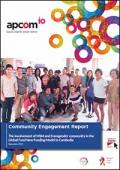Publications on Men Who Have Sex With Men (MSM)

In this research, the Coordination of Action Research on AIDS and Mobility in Asia (CARAM Asia) has focused on a group of migrant workers who are especially vulnerable to HIV: males who have sex with males, otherwise known as “MSM.” MSM migrant workers suffer multiple layers of stigma and discrimination, which, in combination with the risky sexual behaviors they engage in heightens their risk of HIV infection.




Background about STI in Nepal:
- Key interventions for management of STI in Nepal are targeted Behavior Change Communication (BCC), condom promotion and distribution, diagnosis and treatment of STI (both syndromic and etiological management) and referral services.
- STI management services are available from Government Health Facilities and NGOs for key population.
- Nepal has been following WHO recommended approach for the management of STIs in patients with recognized signs and symptoms.










